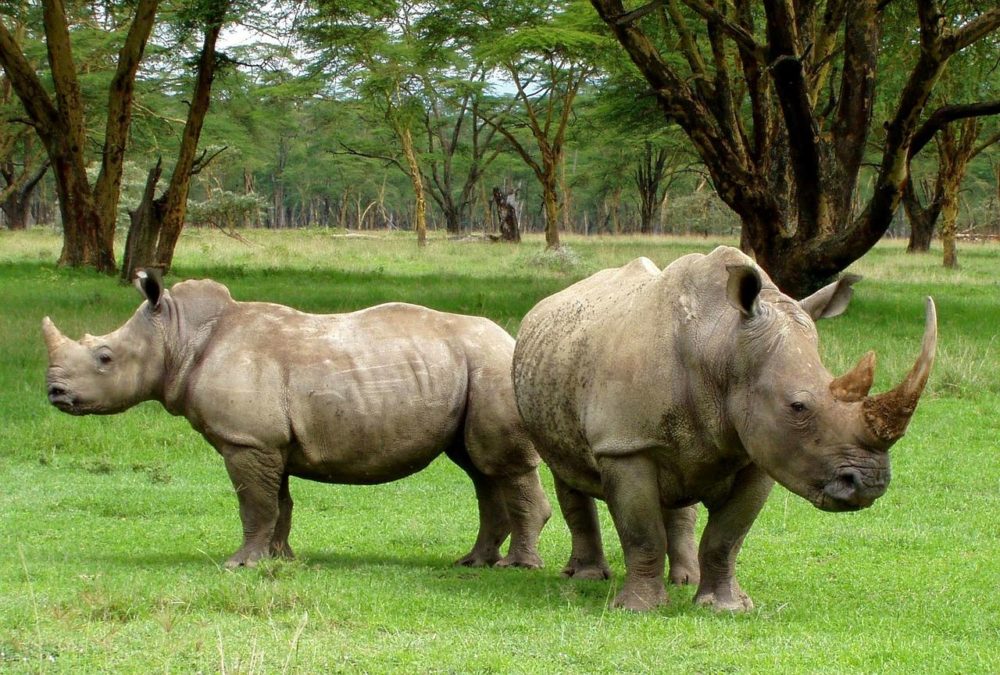Rhinoceros also knew as Rhino is the second largest mammal on planet Earth after Elephant on planet Earth. The name of the animal means ‘nose horn’ and there are in total five different species of rhinoceros that include Black Rhinoceros, White Rhinoceros, Indian Rhinoceros, Javan Rhinoceros, and Sumatran Rhinoceros. Here are some of the Rhinoceros facts,
Rhinoceros Facts
Rhinoceros Habitat: WHERE DOES THE Rhinoceros LIVE?
The species were mostly seen in the parts of Africa and Asia, however, the habitat varies from the savannas to dense forests in tropical and subtropical regions. Most of the black and white rhinos are seen in Africa that too primarily in the southern and eastern countries. The
Sumatran Rhino saw in Indonesia and Malaysia, However, the Javan rhino was seen in a number of Asian countries but today they are only seen in Indonesia and Vietnam. Likewise, Indian Rhino was previously found in most of the subcontinent but today they are only seen in a small section of India and Nepal.
Also Read: Top 10 Wild Animals in the World
Rhinoceros DIET: WHAT DO Rhinoceros EAT?
Rhinoceros are herbivorous and their diet includes grasses, shoots, leaves, fruits, berries, and buds. The animal species can be grazers means they can either seen eating from the ground or they are browsers where they can be seen eating from bushes, shrubs, and trees, however, different species has different style of eating, For example, black rhinos have long and pointed lips for browsing on foliage but the white Rhinos has broad and flat lips for eating.
Rhinoceros PHYSICAL TRAITS
Rhinoceros can grow up to 6 feet in height and 11 feet in length. The species has grey skin, however, sometimes it depends on the soil conditions where they live and graze. The skin is totally wrinkled without any hair on it. Also, the skin at the shoulders can be as much as 1.5 inches thick. The most unique feature is their horns and names come from it “rhinoceros” which means “nose horn.”
Rhinoceros BEHAVIOR
Rhinoceros are solitary animals, however, both males and females establish territories. They use their horns not only to establish their territories it also to defend themselves from potential predators, such as lions, tigers, and sometimes hyenas. The animal’s species is considered very aggressive but they have poor eye-sight but have very good hearing and a keen sense of smell.
REPRODUCTION
While fighting for mating, both males and females fight and can cause serious injuries to each other with their horns. However, after mating, the pair separates. A single baby is known as “calf” and it is born after the pregnancy of 14 to 18 months. The calf began to eat after a few days only when they are born but they need mother milk at least for a year before leaving her completely after 3 years. Females species can produce one calf in every 2-5 years.
MATING SEASON
During the mating season, Rhinoceros can join females for up to 20 days. During the starting, they keep a distance with the female species until she comes to full oestrus and then waits for him to appraoch.
GESTATION PERIOD
The group of Rhinos is known as a crash, However, the pregnancy lasts between 14 and 18 months where mother takes good care of her baby. The young baby known as calf will leave his mother 2-4 years after it is born.
Typical Litter Size
Rhino can reach up to 6 feet in height and can be 11 feet in length with weight up to 6000 pounds and hence one of the heaviest animals in the world. Though the species has a large body the brain is quite small.
POPULATION
All five species are critically endangered, the smaller black rhino is only 5000 left in the wild. Asian species of rhinos have suffered even more with a count of 3,500 left in India and Nepal. The Rinos known for their long hairs known as Sumatran rhinos are only 100 left in the wild. The rarest Javan Rhinos are only 60 left in the wild.
Also Read: Top 10 Animals That Could Disappear Forever
THREATS TO THE Rhinoceros
The main threat to the animal species is poaching because of those horns which are used in traditional Chinese medicine in China, Vietnam and other parts of East Asia. Also, in recent years, poaching has been increased to 200-300 or more per year in South Africa alone which is 30 times more than the poaching levels seen in the 1990s. The government agencies need to bring law and help to conserve Rhinoceros which is declining at a steady rate and If not conserved all species of Rhinos will be extinct in the coming years. Also, habitat loss is an important factor in the declining population.
Also Read: Read and See Photo Of The Last Male Northern White Rhino. Wake Up Call for all of Us!
More INTERESTING Rhinoceros FACTS
- The closest relative to the rhino is Horse, zebra, and tapir.
- The longest measured horn was 4 feet and 9 inches long.
- The insects and other ticks are removed by small birds known as oxpeckers.
- Rhinoceros is one of the fastest land animals that can run up to 40 miles per hour.
- The average lifespan of the species is about 40-45 years in the wild.
These are some of the Rhinoceros facts. Do post your comments.





















